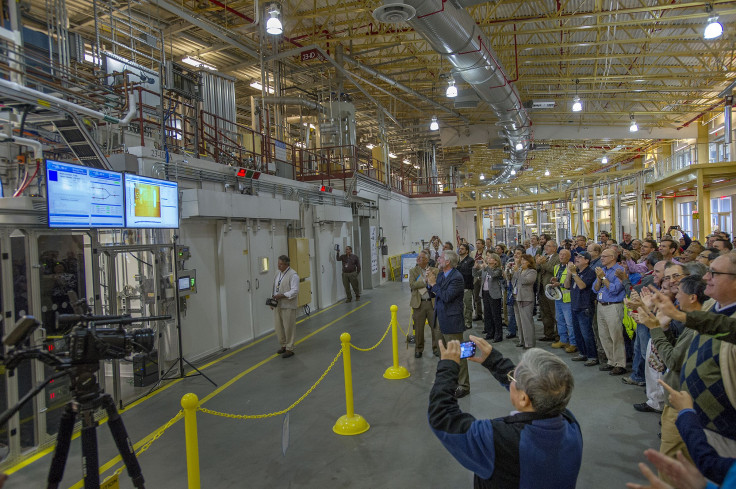National Synchrotron Light Source II Unveiled As Congress Questions Efficiency Of US-Funded Labs

In a flashy step forward for basic research, U.S. Secretary of Energy Ernest Moniz dedicated a $912 million light source at Brookhaven National Laboratory that sponsors hope will lead to new findings on energy, technology and medicine. The facility is dubbed the National Synchrotron Light Source II.
"The research performed at NSLS-II will probe the fundamental structure of novel materials and help drive the development of low-cost, low-carbon energy technologies, spark advances in environmental science and spur medical breakthroughs," Moniz said at Friday’s dedication.
The O-shaped 627,000-square-foot facility on New York’s Long Island is designed to shoot out a steady stream of ultraviolet and infrared light as well as the brightest X-ray light of any such source in the world. Researchers from companies and universities can siphon off strands to try to create superconductors that can boost the efficiency of the electrical grid, examine catalysts to build better fuel cells and engineer safer systems for nuclear power according to a statement. Scientists apply for “beam time” and as many as 4,000 may be working with the light source annually once it is fully operational in five years.
Biologists will use it, too, perhaps to peer into protein receptors in cellular membranes that harbor viruses, or study the ways hormones cause changes in our bodies. Researchers from Baxter International Inc. and their collaborators began testing a vaccine for Lyme disease in 2013 that was first developed from work with a similar beam.
The light source took a decade to plan and build before achieving “first light” -- the photons of an X-ray beam -- in October. The recent dedication comes amid a congressional review tackling the question of whether the nation’s research facilities are operating as efficiently and productively as possible -- a question Congress has posed repeatedly. Brookhaven National Laboratory is one of 17 such facilities around the country funded and maintained by the government for the purpose of advancing basic research and contributing to military and energy technologies.
Meanwhile, Brookhaven National Laboratory is finding favor with politicians -- New York Gov. Andrew Cuomo has set aside $25 million in his budget for the light source and President Obama has proposed a $20 million bonus to Brookhaven this year.
"This is an exciting time for our laboratory, for many fields of science and for our nation,” Doon Gibbs, lab director at Brookhaven, said in a statement. “NSLS-II offers scientists an unprecedented tool for X-ray imaging, and its addition to the lab will make Brookhaven Lab a hub for major discoveries and a leader in synchrotron science for decades to come."
A portion of the funding for the project -- $150 million -- came from the American Recovery and Reinvestment Act of 2009. The rest was paid for by the Department of Energy’s Basic Energy Sciences program, Science reported.
Brookhaven is the former home of another light source called the National Synchrotron Light Source, which was in operation for 32 years before shutting down last year. That light source “was one of the world’s most widely used scientific facilities” and resulted in 900 publications a year, Brookhaven said. The facility cost $37 million a year to run. Researchers who worked with the former light source earned two Nobel Prizes, including one for uncovering the chemical signals of nerve impulses, and collaborated on work that resulted in a third. The new machine generates light that is 10,000 times brighter than its predecessor.
© Copyright IBTimes 2024. All rights reserved.












